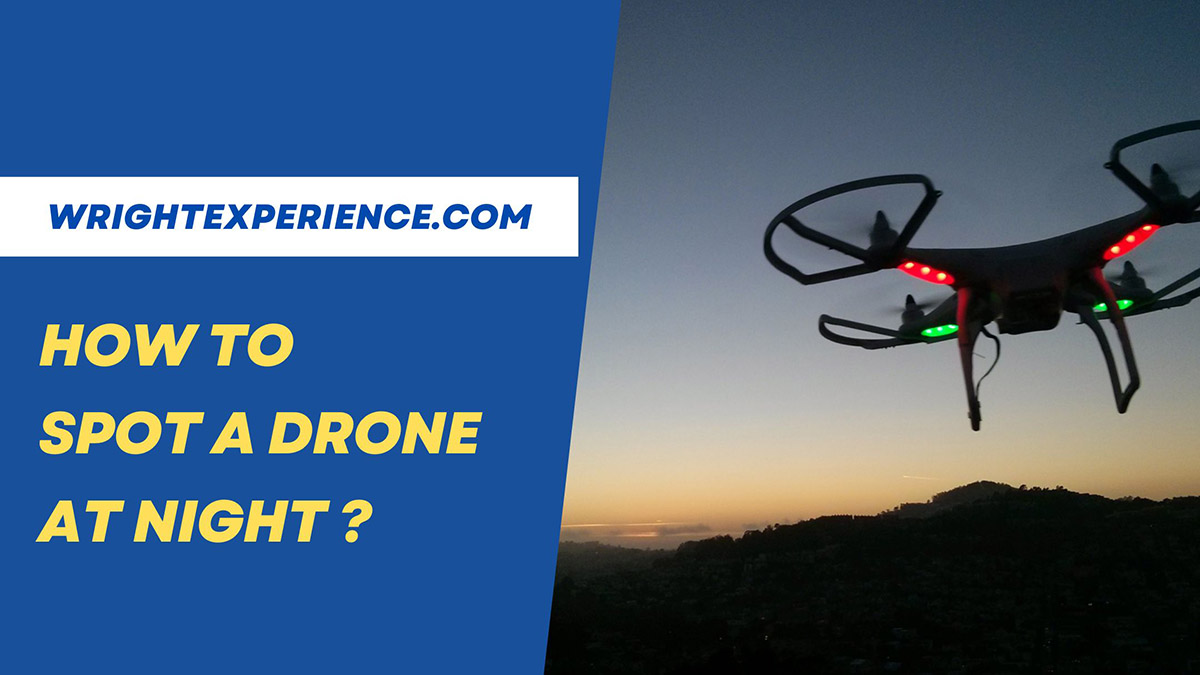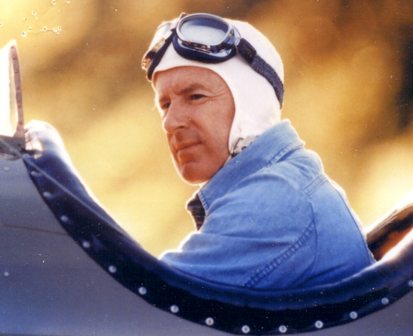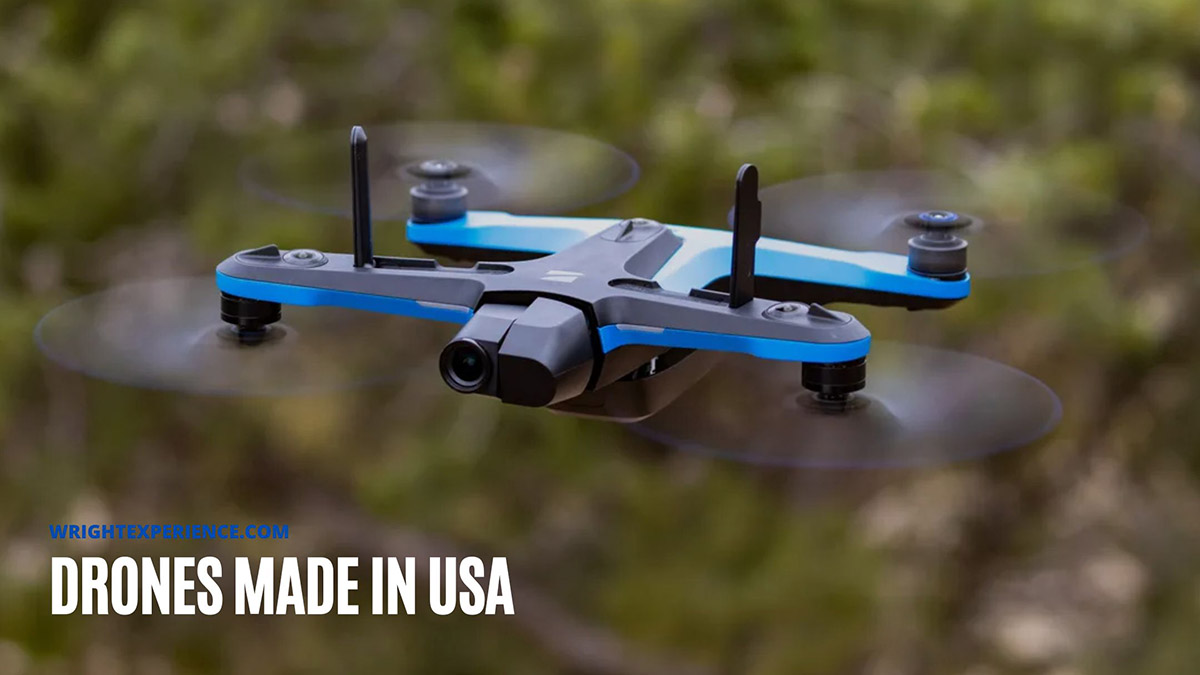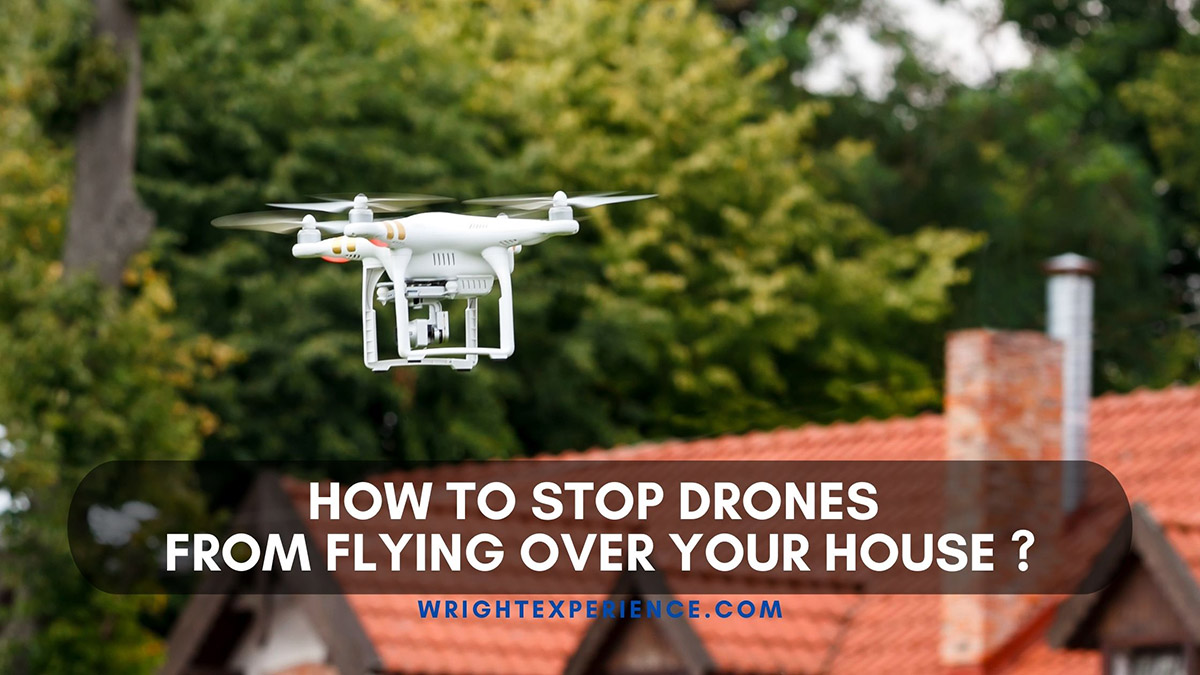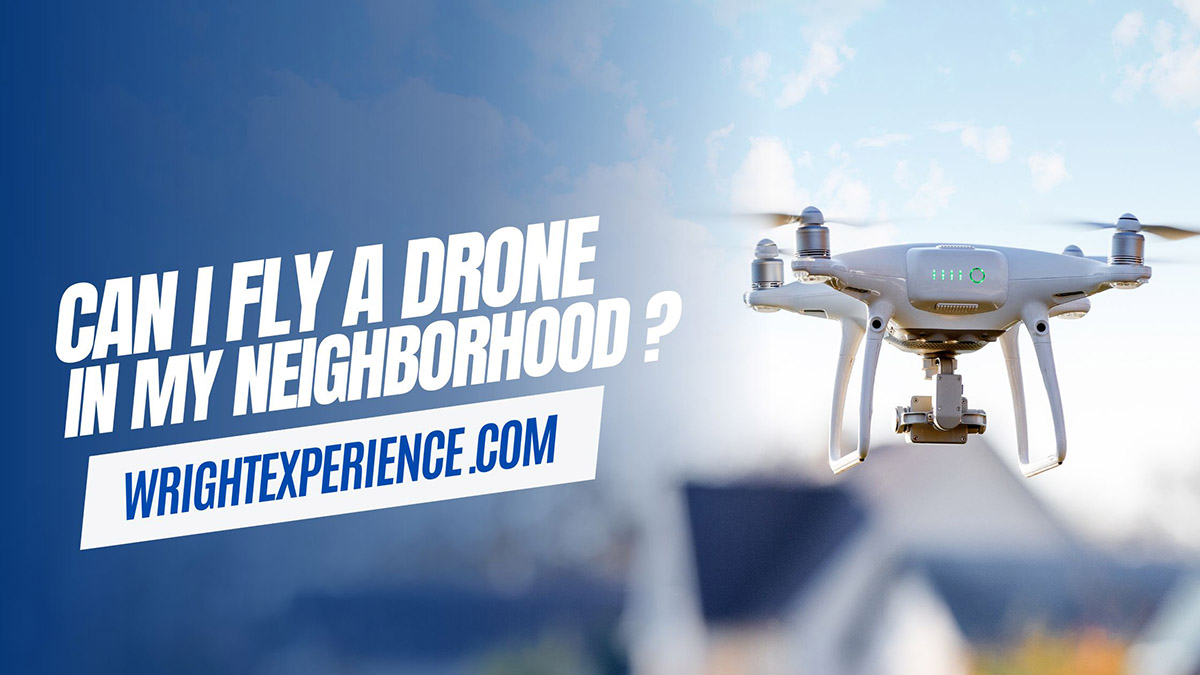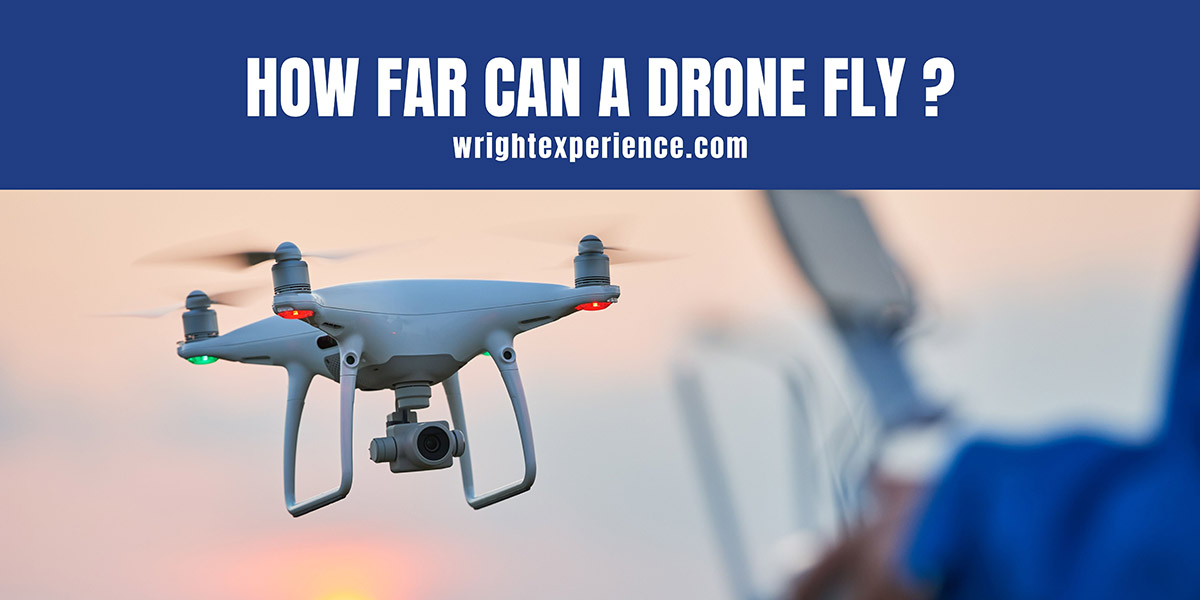Many aerial vehicles, or drones, are specifically designed for night flying. These drones feature brighter white lights than day-flying drones and night vision cameras.
Flying vehicles can be used for evil intentions, such as smuggling or breaching private property at night. Knowing how to spot a police drone or other types at night might be a life-saving skill for law enforcement agencies and individuals who need to identify and address potential drone threats.
In this article:
So, How To Spot Drones At Night?
It’s easy to detect a drone at night with its navigation lights, which come in various colors. When noticing 2 pairs of such lights, that’s probably a drone. A distinct buzzing or humming noise also suggests a drone flying at night.
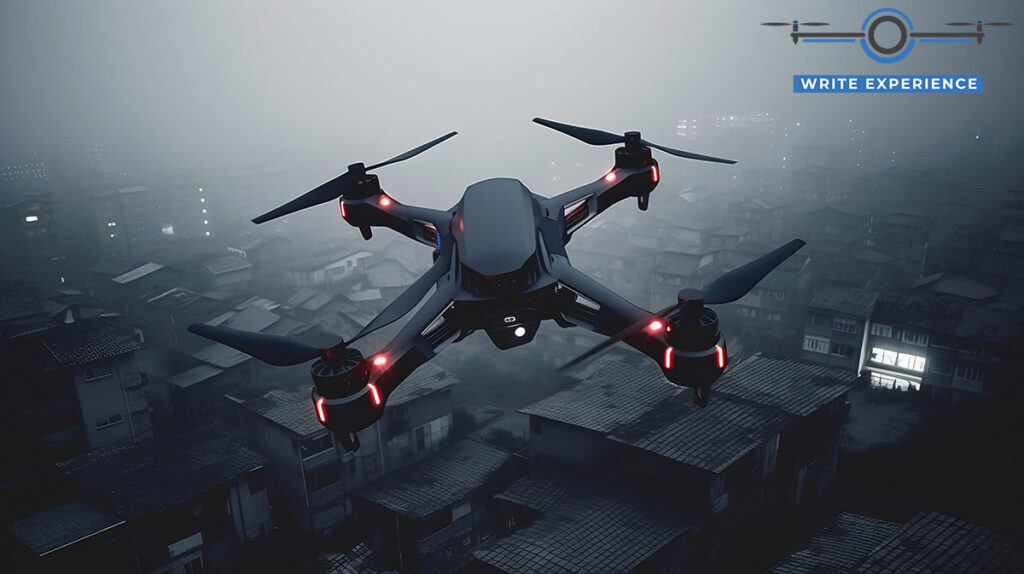
Visual
Look for lights: Most aerial vehicles have navigation and anti-collision lights, but the color can vary depending on the type of drone. According to our experts at The Wright Experience, they are often white, red, or green light. Seeing 2 pairs of visible lights in the night sky likely indicates a flying drone.
Look for shadows: To spot a drone’s shadow at night, find an area with a clear view of the ground or a building. Look for a moving shadow that is not attached to anything else. If the shadow matches the size or shape of a drone, it could be one.
Look for reflections: Drones can also be spotted by their reflections on shiny surfaces at night. In a dark area, look for moving reflections on lakes, rivers, or pools. A reflection that matches the dimensions of a drone could be it.
Look for IR signatures: Drones emit infrared (IR) radiation, which can be detected by IR cameras. Use the IR camera to scan the sky. If you see a warm object that is moving and does not match any known aircraft, it could be a drone.
Auditory
Listen for the drone sound: Even the quietest drone can still be heard, especially when it is flying close by. The sound of propellers is a distinctive buzzing or humming sound that is difficult to miss. The drone sounds can be difficult to hear in a noisy environment, but it is usually audible in quiet areas.
Electronic
Drone detection app: Drone detector applications use radio frequency (RF) and acoustic cues to spot drones. RF detection detects radio signals emitted by drones to communicate with their operators, whereas acoustic sensors recognize the sound of propellers. Radio waves travel better in the dark than in the light, making RF detection an effective way to spot drones at night. Unencrypted Wi-Fi signals can also be detected using an RF detector.
Thermal imaging camera: Security companies often use thermal imaging cameras to detect heat emitted by drones, making them visible even in night vision. This camera can range in price from a few hundred to several thousand dollars.
Parabolic microphone: Because of their ability to amplify sound from a distance, parabolic microphones, which cost under $100 and are simple to use, can identify drones from 0.06 to 0.12 miles away.
Observational
Look for unique flight patterns: Drones can fly in a variety of ways; however, those used for malicious purposes may fly in more erratic or unusual patterns. For example, they may fly low to the ground, hover in one spot for a long time, or fly in a zigzag pattern.
Look for payloads: Some drones are equipped with payloads, such as cameras, lights, or speakers. A drone with a camera flying at night could be a spy drone.
Look for the drone pilot: Drones are mainly controlled by a human operator. If you see an operator nearby, the flying object could be a drone.
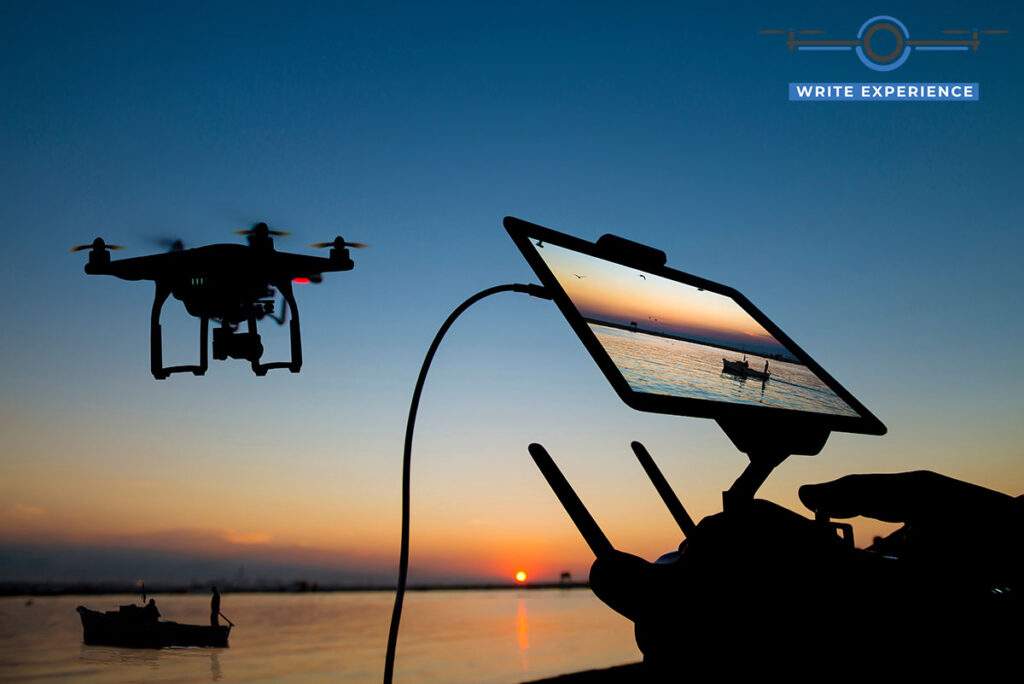
According to our research at The Wright Experience, most drones at night are consumer drones used by hobbyists and photographers, and they have bright LED lights that make them easy to see.
Commercial and police drones at night, on the other hand, frequently utilize more specialized features, such as infrared cameras or low-light cameras, making them harder to spot. They do, however, include anti-collision lights that make them more visible to other aircraft.
Don’t be alarmed if you see a drone flying at night. It’s most likely a consumer drone, a police drone, or a commercial drone doing its job.
Factors Affecting The Visibility Of Drones At Night
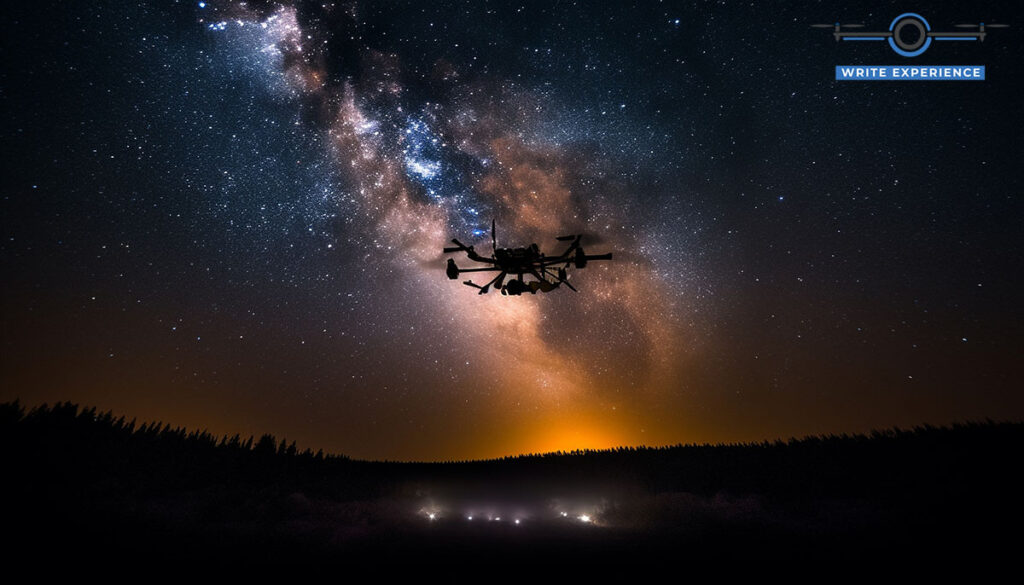
Distance: It’s undoubted that the further away a drone is, the more difficult it will be to see.
Light pollution: Light pollution from city lights or other sources can make it difficult to see a drone’s lights. If you’re trying to spot a drone in a brightly lit area, it’s better to look for its shadow or listen to its sound.
Weather: Fog, rain, or snow can reduce drone visibility, as these weather conditions can scatter light that obstructs the drone’s lights, shadow, or reflection.
Drone type: Some drones are more recognizable than others at night. For example, models with bright lights and large bodies will be easier to see than those with dim lights and small builds.
Drone operator: The drone operator can also affect drone visibility like flying it behind trees or buildings.
What To Do If You Spot a Drone?
If you do spot a drone at night, don’t try to shoot it down! That’s illegal and dangerous. Instead, follow the guidelines below.
Step 1. Identify the drone. If possible, get a good look at the drone and record its size, shape, and color. Suppose the drone has any markings; try to identify them as well. This information can be helpful when you need to report the drone to the authorities.
Step 2. Determine the drone’s altitude and flight path. Is the drone flying high or low? Is it flying in a straight line or circling around? This information can help you assess the potential threat posed by the drone.
Step 3. Be aware of your surroundings. Are there any people or property in the area that could be harmed by the drone? If so, take steps to protect them.
Step 4. If the drone is behaving suspiciously, report it to the authorities. You can do this by calling the local police department or the Federal Aviation Administration (FAA).
Step 5. Take action if necessary. If the drone is causing a direct threat to you or your property, you may need to take action. For example, once the drone is flying too close to your house, you may want to turn off the lights or close the curtains.
Anti-Drone Solutions For You To Try
There are a variety of anti-drone solutions available, and the best approach for you will depend on your specific needs. Be aware of the potential impact of anti-drone solutions on other electronic devices in the area and only use them when necessary. Here are a few options to consider:
Radio frequency (RF) jammers: RF jammers block the signal between the drone and its controller. This causes the drone to lose control and either land or return to its home point.
Acoustic deterrents: Acoustic deterrents emit high-pitched sounds that can disorient or even stop drones.
Net guns: Net guns fire a net that can entangle and disable drones.
Laser weapons: Laser weapons can disable drones by damaging their electronic components. Make sure the weapon you choose is legal in your area.
Drone detection and tracking systems: They can help you identify and track drones in your area. This information can then be used to deploy other anti-drone solutions, such as RF jammers or net guns.
Use physical barriers: If you have a privacy fence or other physical barriers, these can help deter drones from flying near your property.
GPS Spoofing: GPS spoofing is a technique that can trick a drone into thinking it is somewhere else. This can cause the drone to fly off course and crash.
If you’re concerned about drones being used for malicious purposes at your property, we suggest you use an RF jammer or a net gun. But when you’re just trying to keep drones away from your property, an acoustic deterrent may be sufficient.
Conclusion
Drones are the nocturnal ninjas in the night sky. They can be silent, stealthy, and difficult to spot. But with a little knowledge and preparation, you can become a drone detection master.
Still, these objects are subject to various rules and regulations, including restrictions on where and when they can be flown. Before you go out spotting drones, make sure you know the rules in your area.

